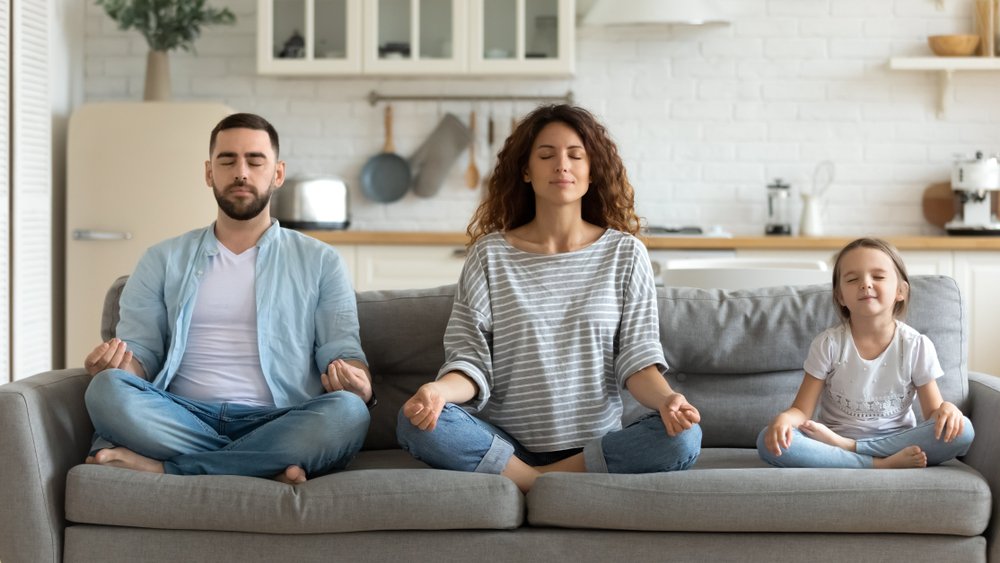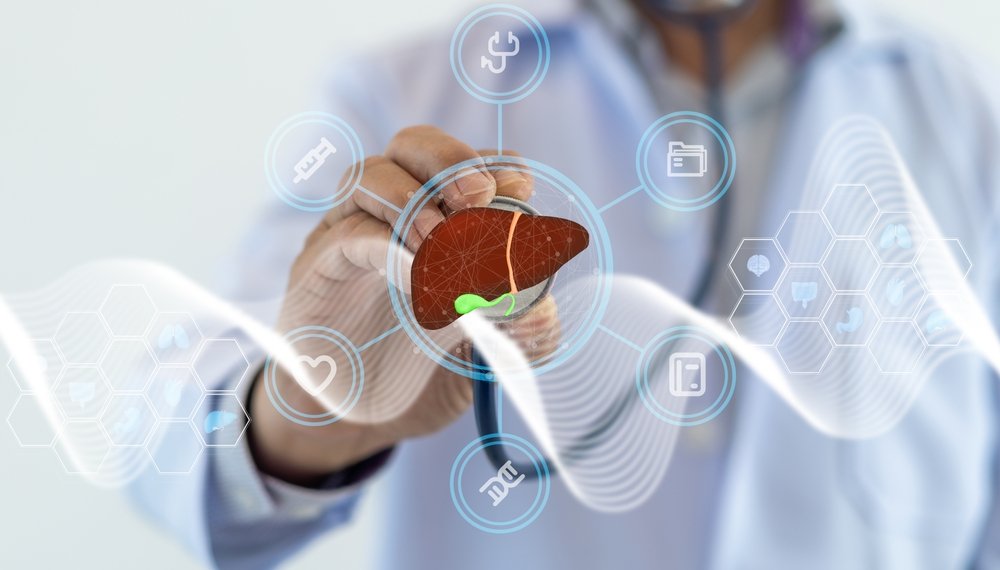In the fast-paced world, stress and anxiety often join a huge number of people. The mixture of information and responsibilities along with high expectations could easily make most people feel both overwhelmed and disconnected. However, the introduction of some mindfulness into the routine could help us feel calm once more and happy again. Mindfulness is where we maintain a presence and full engagement in the current moment and can offer multiple advantages to mental and physical well-being.
Understanding Mindfulness
Being present means a nonjudgmental awareness of thoughts, feelings, and bodily sensations. It is about experiencing life as it happens instead of getting caught up in past regrets and future worries. By bringing present-moment awareness to life, it takes you out of your limited thought patterns that frequently cause the genesis of stressors and unrest in your life.
Mindfulness Benefits
Several beneficial effects arise from the mindful practices, as suggested by research:
Reduced Stress: Mindfulness provides relaxation to a person and allows one to manage stress in a way that minimizes any adverse physiological effects.
Improved Mental Health: Mindfulness helps alleviate anxiety and depression symptoms with a reconciled self-concept, hence leading to better overall mental health.
Improved Physical Health: This may include directly lowering blood pressure, improving the pattern of sleep, and alleviation from chronic pain.
Better Emotional Regulation: The varied ability of mindfulness allows individuals to observe emotional phenomena without immediately reacting to them, which also helps with emotional regulation and resilience.
Better Attention: This involves the enhancement of attention and reduction or inhibition of distraction in the mind training itself to remain in the present.
Practical Mindfulness Hacks
Integrating these mindfulness practices into daily routines doesn’t require lengthy time commitments or huge lifestyle changes. Here are a few practical mindfulness hacks to set into motion toward a calm, happy living:
Mindful Breathing
Every day, a few minutes should be set aside simply to reflect on breathing. Find an unperturbed, intimate place where you can sit down comfortably and close your eyes. Breathe in deeply, through the nose-this is the time when you let your stomach expand. Then softly release your breath through the mouth. Your attention should be on the feeling of air coming in and out of the body. Make it a practice: Whenever the mind drifts off, gently bring it back to your breath. Such an exercise quiets the mind and removes stress.
Body Scan Meditation
What this method has you do is to make an effort to observe various parts of your body and perform a body scan, taking your body from head to toe. You must lie or sit in a comfortable, relaxed position with your eyes closed. Focus on the toes; observe any sensations, tension, or discomfort. Be sure, then, to move along upwards through the different parts of the body, up to the very top of the head. The body scan technique promotes relaxation and is highly effective for pinpointing tense areas.
Mindful Eating
It is possible to treat a meal like an act of mindfulness. Before eating, take a moment to observe and smell the food. Chew slowly and savor the taste, texture, and sensations in your mouth. Thus resulting in the enhancement of the experience of eating and digestion, which may help prevent overeating.
Walking Meditation
Walk infused with a sense of mindfulness. Feel how your feet touch the ground. Check your body’s rhythm and respect the movement. You might want to take in sights, sounds, and smells around you in a nonjudgmental way. Walking meditation provides a physical activity with meditation, benefiting both mind and body.
Chaitanya Meditation
Meditations of this kind are usually known as Metta meditations which bring good wishes to oneself or others by saying phrases silently. Choose a quiet place to sit and close your eyes. First, send kind thoughts to yourself and say, “May I be happy, may I be healthy.” Later on, extend these wishes to others: friends, acquaintances, and then those you fight with. This meditation fosters compassion and emotional well-being.
Mindful Technology Use
With all the notifications buzzing and beeping today, it can be all too easy to enter a stress spiral and suffer from digital overload. Try setting specific times to check in on your email and social media. Designate tech-free sections of your day. You may also engage with the app or built-in features of platforms that will remind you to take a momentary break, breathe or do a quick meditation. Some modern browsers are even shipped with built-in mindfulness tools to help users de-stress, refocus or stay on task.
Conclusion
In conclusion, meditation is not something that requires an overall change in life to provide immense scientific gains. Simple techniques like mindful breathing, meditation, or conscious use of technology could provide peace, happiness, and whole health. Through mindfulness, one increases resilience towards emotional suffering, reduces stress, and builds a supportive relationship with his self and all the things around him.






Дамски комплекти за преходните сезони с дълъг ръкав и леки материи
евтини дамски комплекти komplekti-za-jheni.com .
Изчистени линии и елегантна визия с дамски блузи за офиса
елегантни дамски блузи bluzi-damski.com .
Услуги клининга с выездом в день обращения по доступной цене
услуги клининга в москве цены на услуги https://kliningovaya-kompaniya0.ru .
Эффектное завершение дня — вечерняя аренда яхты в Сочи
снять яхту в сочи https://www.arenda-yahty-sochi23.ru .
Традиционный отдых в Гаграх с акцентом на спокойствие и тишину
отдых в гаграх 2024 http://www.otdyh-gagry.ru .
Film tutkunlarına özel güncel ve kaliteli full hd film arşivi
4k fılm ızle https://filmizlehd.co/ .
Надежная доставка алкоголя от проверенных поставщиков и магазинов
заказать алкоголь в москве заказать алкоголь 24 часа в москве .
Access detailed information about the Audemars Piguet Royal Oak Offshore 15710ST here , including price trends ranging from $34,566 to $36,200 for stainless steel models.
The 42mm timepiece features a robust design with automatic movement and durability , crafted in rose gold .
Authentic Piguet Royal Oak Offshore 15710 st price
Analyze secondary market data , where limited editions reach up to $750,000 , alongside pre-owned listings from the 1970s.
Request real-time updates on availability, specifications, and historical value, with trend reports for informed decisions.
Discover detailed information about the Audemars Piguet Royal Oak Offshore 15710ST via this platform , including market values ranging from $34,566 to $36,200 for stainless steel models.
The 42mm timepiece features a robust design with mechanical precision and water resistance , crafted in titanium.
https://ap15710st.superpodium.com
Compare secondary market data , where limited editions command premiums , alongside pre-owned listings from the 1970s.
View real-time updates on availability, specifications, and investment returns , with trend reports for informed decisions.
Клининг в Москве становится все более популярным. Благодаря высоким темпам жизни жители мегаполиса ищут способы упростить быт.
Компаниям, занимающимся клинингом, доступны разнообразные виды услуг. Среди этих задач можно выделить как регулярную уборку жилых помещений, так и специализированные услуги.
При выборе клининговой компании важно обратить внимание на опыт работы и отзывы клиентов. Профессиональный подход и соблюдение чистоты и порядка важно для обеспечения высокого качества услуг.
Таким образом, услуги клининга в Москве предоставляют возможность сэкономить время. Каждый может выбрать подходящую компанию, чтобы обеспечить себе чистоту и порядок в доме.
служба клининга https://www.uborkaklining1.ru .
Каркасный дом с тёплым чердаком, камином и просторной верандой
каркасный дом цена каркасный дом цена .
Цветная печать на футболках: стойкие краски, точная передача деталей
заказ футболок со своим принтом pechat-na-futbolkah777.ru .
Посетите наш сайт и узнайте о клининг спб цена!
Клининговые услуги в Санкт-Петербурге востребованы как никогда. С каждым годом всё больше компаний предлагают широкий спектр услуг по уборке и обслуживанию помещений.
Пользователи услуг клининга отмечают высокое качество и удобство. Большинство компаний предлагает индивидуальный подход к каждому клиенту, учитывая все пожелания.
В спектр клининговых услуг входят как плановые уборки, так и одноразовые мероприятия
Реализуем мечту: деревянные дома под ключ с камином, баней и панорамными окнами
дом деревянный под ключ цена http://derevyannye-doma-pod-klyuch-msk0.ru/ .
Наши клининговые услуги в Москве цены разработаны с учётом потребностей каждого клиента. Оформите заявку за 2 минуты.
В последние годы клининг в Москве становится все более востребованным. Растущее число москвичей начинает доверять уборку своих объектов профессиональным клининговым компаниям.
Цены на клининг могут варьироваться в зависимости от специфики услуг. Например, стандартная уборка квартиры может стоить от 1500 до 5000 рублей.
Клининговые компании предлагают дополнительные услуги, такие как мойка окон и чистка мебели. Стоимость дополнительных услуг может существенно сказаться на общей цене уборки.
Перед выбором клининговой фирмы рекомендуется ознакомиться с различными предложениями на рынке. Обращайте внимание на отзывы и рейтинг выбранной клининговой компании.
This is my first time go to see at here and i am truly happy to read all at one place.
effetto tadalafil 5 mg
Клининг СПб от надёжной команды — это чистота в квартире, офисе или коттедже без усилий. Гарантируем точные сроки и вежливый персонал.
Сфера клининга в Санкт-Петербурге вырабатывает тренды. Существует множество фирм, предоставляющих разнообразные клининговые услуги. Уборка квартир, офисов и общественных мест – это основные направления клининговых услуг.
Многие люди предпочитают услуги клининга для того, чтобы сэкономить время. Так они освобождают время для выполнения более важных задач. Клиенты ценят клининг за возможность делегировать рутинные задачи.
Одна из основных причин популярности клининговых компаний – это профессионализм. Специалисты клининговых компаний знают, как правильно применять современное оборудование и моющие средства. Это позволяет добиться отличных результатов за короткий срок.
Клиенты могут выбрать различные пакеты услуг, чтобы удовлетворить свои потребности. Некоторые компании предлагают разовые уборки, другие – долговременное сотрудничество. Это позволяет выбрать наиболее подходящее предложение каждому клиенту.
Успейте записаться на барбершоп обучение с бонусами. Учитесь и выходите в профессию без лишней теории.
Все больше людей интересуются курсами барбера. Количество школ, обучающих барберов, постоянно растет. Рост популярности мужских стрижек и ухаживающих процедур объясняет интерес к таким курсам.
Курсы охватывают как техники стрижки, так и важные аспекты общения с клиентами. Учащиеся получают актуальные знания, которые помогут им построить карьеру в этой сфере. Они изучают различные стили и техники стрижки, а также уход за волосами и бородой.
Выпускники имеют возможность трудиться в парикмахерских или запускать собственные проекты. Месторасположение и репутация учебного заведения также играют важную роль в выборе курсов. Необходи?мо внимательно изучить отзывы о курсах, прежде чем принять решение о записи.
Выбор подходящих курсов барбера должен основываться на ваших целях и ожиданиях. С увеличением конкуренции на рынке, приобретение качественного образования становится важным фактором. Не забывайте, что успех в этой профессии зависит от постоянного обучения и практики.
В меню Сакура доставка — сотни блюд японской и корейской кухни. Подача красивая, вкус — запоминающийся.
Вок-заказ стал популярным способом получения вкусной еды на дом. Это связано с удобством и разнообразием предлагаемых блюд.
Существует множество ресторанов, предлагающих вок-заказ. Каждое заведение старается выделиться своим ассортиментом и акциями.
Рекомендуется ознакомиться с отзывами о заведениях, прежде чем делать заказ. Таким образом, вы сможете определить, какие ресторанные услуги наиболее надежные.
Иногда рестораны предлагают привлекательные скидки на вок-блюда, что делает заказ еще более приятным. Скидки на вок-блюда позволяют сэкономить деньги и попробовать что-то новенькое.
Her türden filmi 4k film izle kalitesiyle izleyerek benzersiz bir deneyim yaşayın. Görüntü ve ses kusursuzluğu sizi etkileyecek.
büyüyen bir trend haline geldi. Teknolojik gelişmeler sayesinde, izleyiciler artık filmleri etkileyici bir netlikte deneyimleyebiliyor. 4K çözünürlüğün netliği ve kalitesi izleme deneyimini bambaşka bir seviyeye taşıyor.
Pek çok yayın servisi 4K çözünürlükte Full HD filmler sağlıyor. Bu servisler film kalitesini geliştirerek izleme zevkini artırıyor. Netflix ve Amazon Prime gibi popüler platformlar geniş bir 4K içerik arşivine sahip. Bu geniş seçenek yelpazesi her kesime hitap ediyor.
4K’da Full HD film keyfi için uyumlu bir cihaz şarttır. Günümüzün birçok televizyonu ve projektörü 4K çözünürlükle uyumludur. Donanımınızın özelliklerini kontrol ederek 4K oynatmaya uygun olduğundan emin olun.
Nihayetinde, 4K’da Full HD film izleme deneyimi rakipsizdir. Uygun kurulum ve güvenilir bir platform sayesinde etkileyici görüntülere kendinizi kaptırabilirsiniz. Bu fırsatı değerlendirin ve film izleme deneyiminizi bir üst seviyeye çıkarın.
Ailecek izlenebilecek seçenekleriyle türkçe dublaj film izle full hd 2023, herkesin favori film platformu olmaya aday.
Full HD film izlemek olağanüstü bir macera sunar. Teknolojik ilerlemeler sayesinde film kalitesi yeni zirvelere ulaştı. Artık etkileyici görsellerin ve sürükleyici seslerin tadını çıkarabilirsiniz.
Son yıllarda 4K çözünürlük büyük bir popülerlik kazandı. Bu yüksek çözünürlük, standart HD’ye kıyasla daha net ve ayrıntılı görüntüler sunar. Birçok sinema hayranı için 4K kalitesinde film izlemek olmazsa olmazdır.
Yayın platformları, Full HD ve 4K filmlere erişimi kolaylaştırdı. İzleyiciler sevdikleri filmleri her an ve her yerden izleme imkanına sahip. Bu erişim rahatlığı, film keyfini yaşama biçimimizi yeniden şekillendirdi.
4K içeriklerin artmasıyla birlikte yüksek kaliteli ekranlara olan talep de artıyor. İyi bir 4K TV satın almak film izleme deneyimini büyük ölçüde geliştirir. Tutkulu sinemaseverler için bu yatırım son derece kıymetlidir.